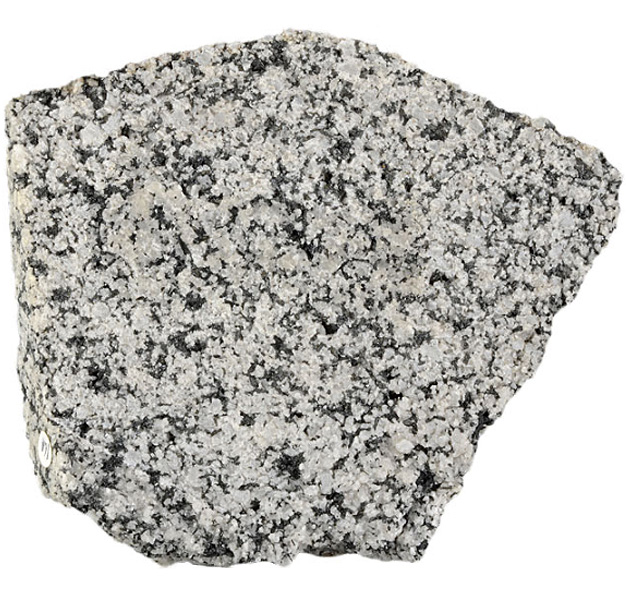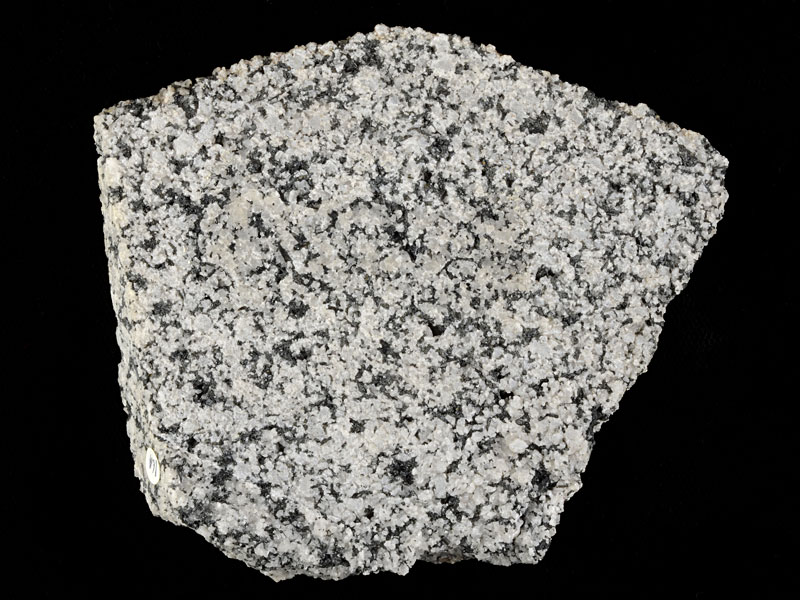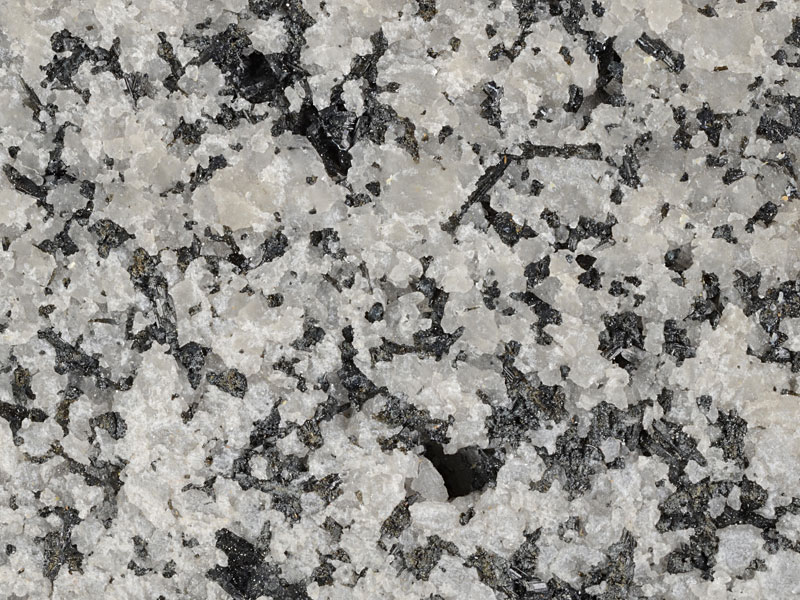
Fact sheet
This sample is an excellent example of a prominent outcrop of quartz ‘shorl’ rock from Roche, close to the town of St Austell in SW England. The outcrop is part of the northern flank of the St Austell granite. Shorl is a local term for a tourmaline rich granitic rock, and this one represents a late phase of the St Austell granite body, that formed after most of the body had crystallised. It may represent the roof of the magma chamber. The outcrop consists of numerous interleaved pegmatite sheets and many cavities filled with quartz, tourmaline, zinnwaldite, and topaz.
The thin section consists of just two minerals; elongate and stubby tourmaline grains exhibiting blue/pale brown pleochroism and second order birefringence colours; and large plates of underformed quartz, exhibiting first order birefringence colours and high concentrations of solid and fluid inclusions that make them appear dusty.
The United Kingdom Virtual Microscope (UKVM) collection consists of igneous, sedimentary and metamorphic rocks from around the UK.
It is intended as a teaching resource, helping to tell the story of the common rock types and how they form, and reflecting the history of the UK at the margins of the continent of Europe. The collection is a series of teaching sets, for example igneous rocks from the North Atlantic Igneous Province and SW England; high-temperature metamorphic rocks from Scotland and low-temperature metamorphic rocks from Wales; and sedimentary rocks, including English limestones and sandstones.








